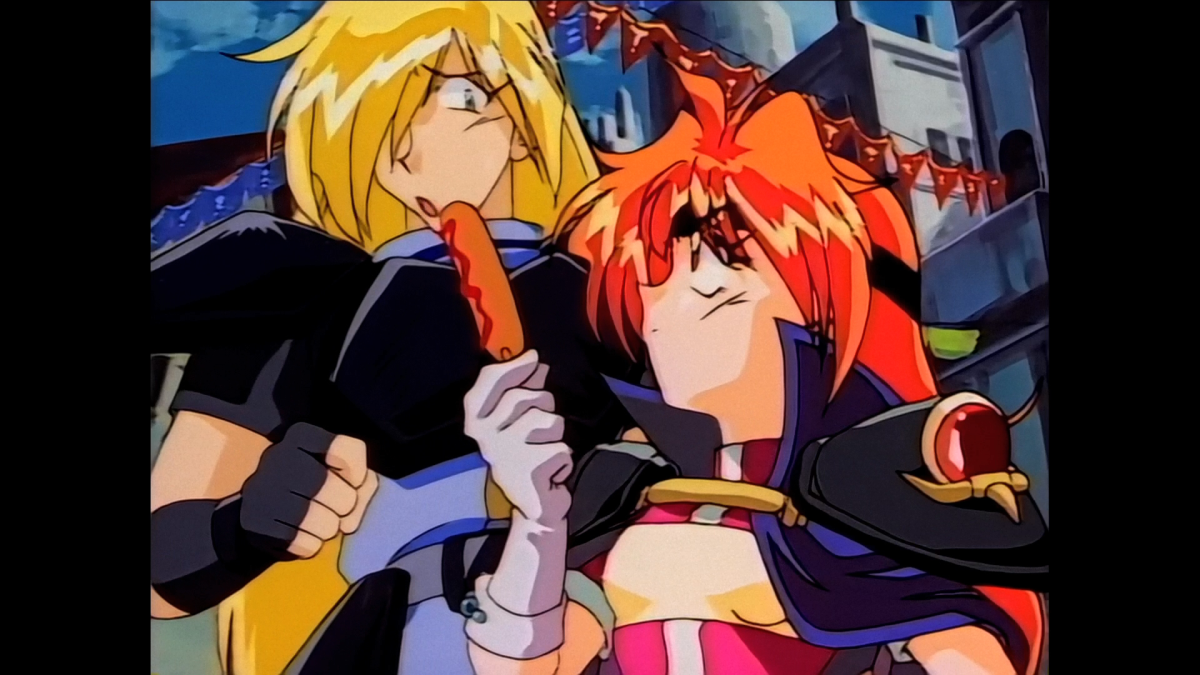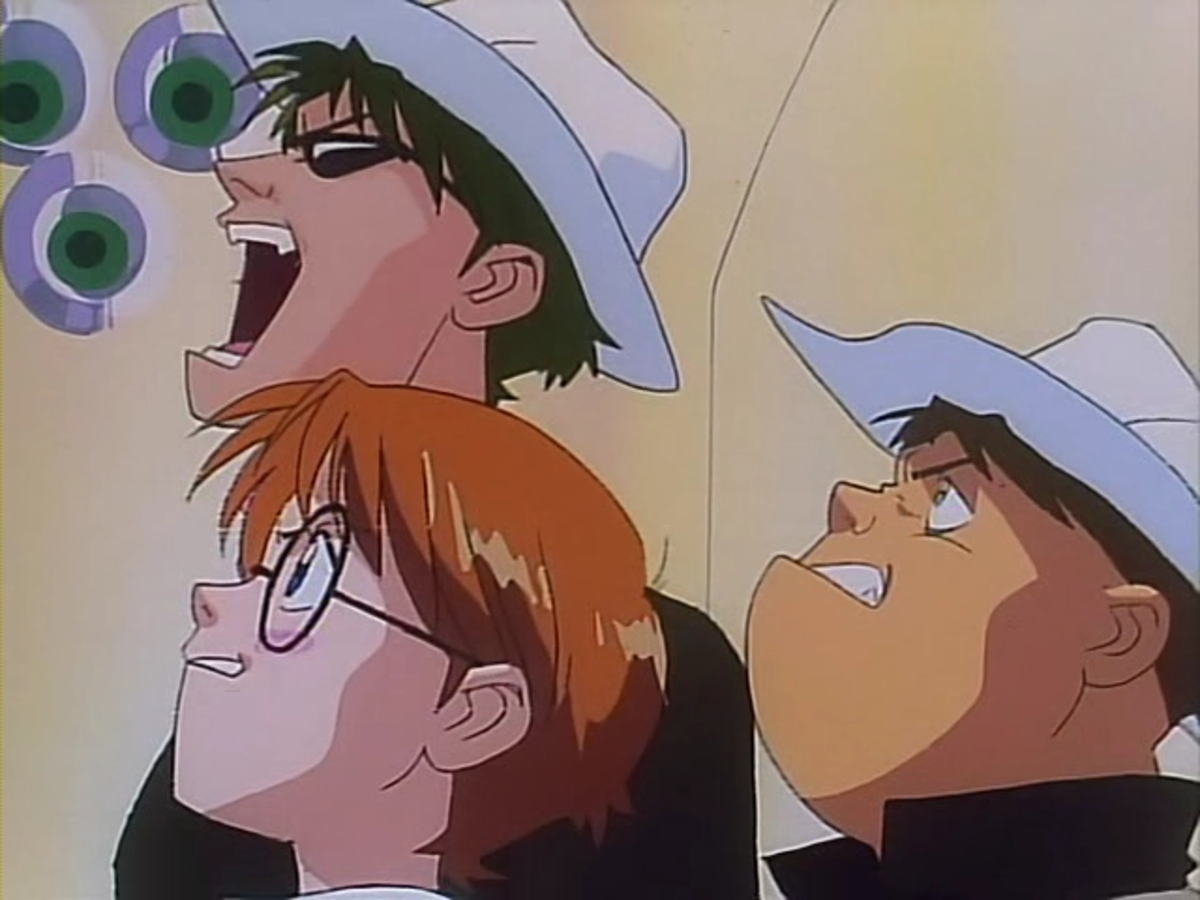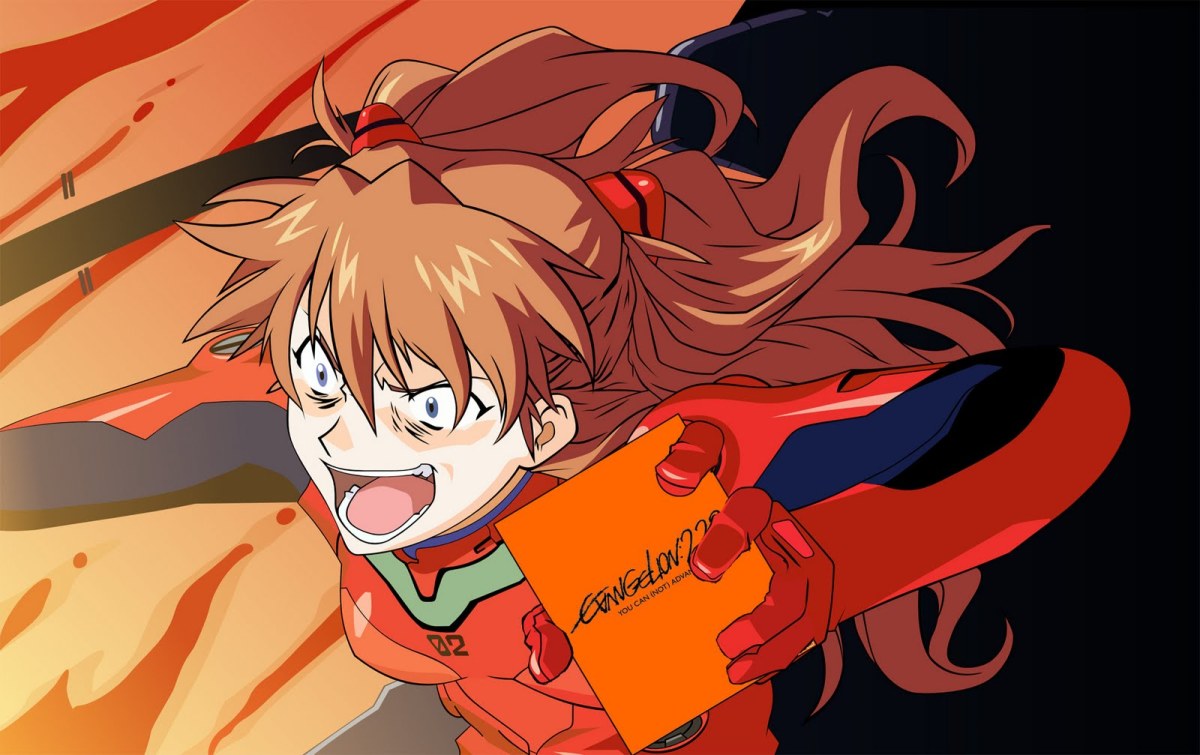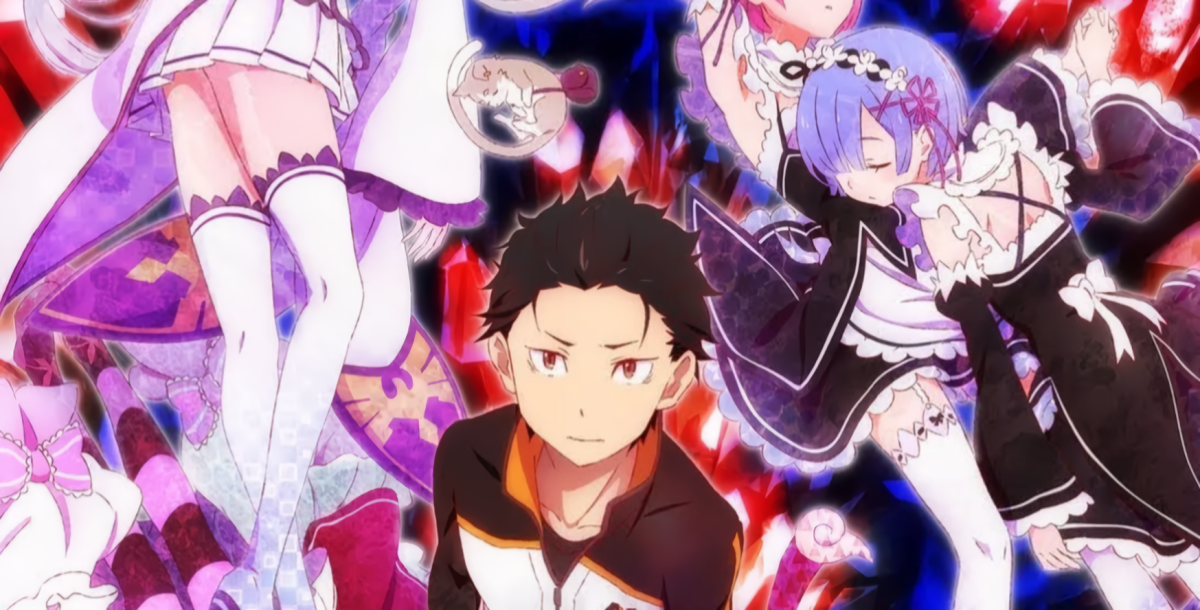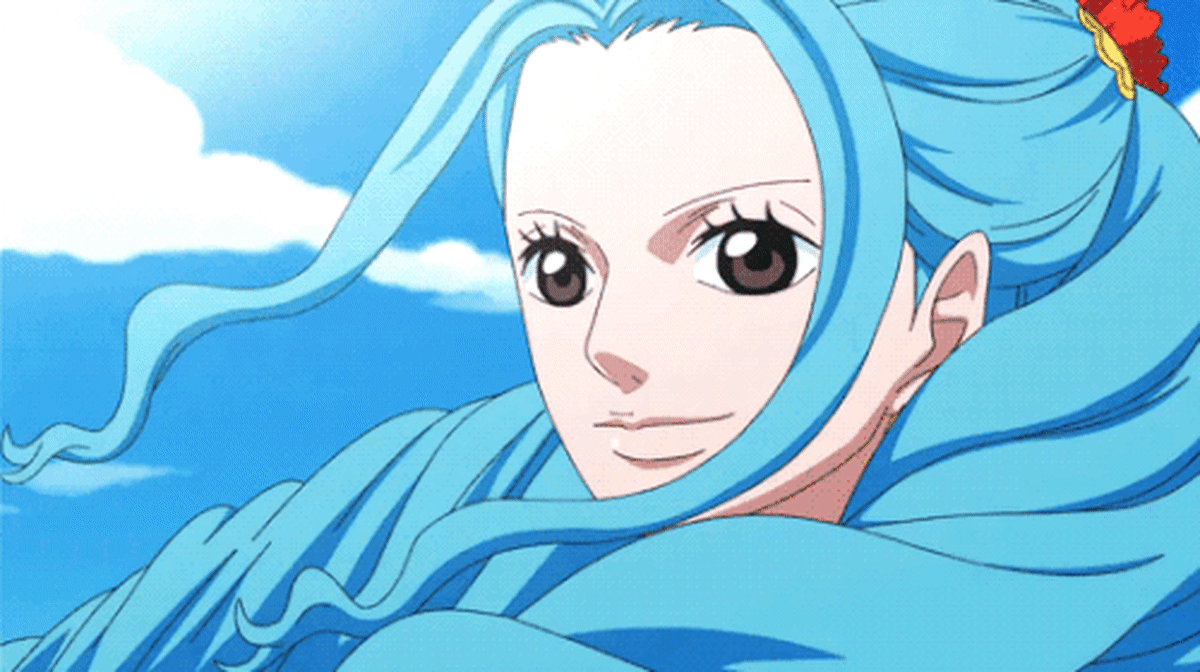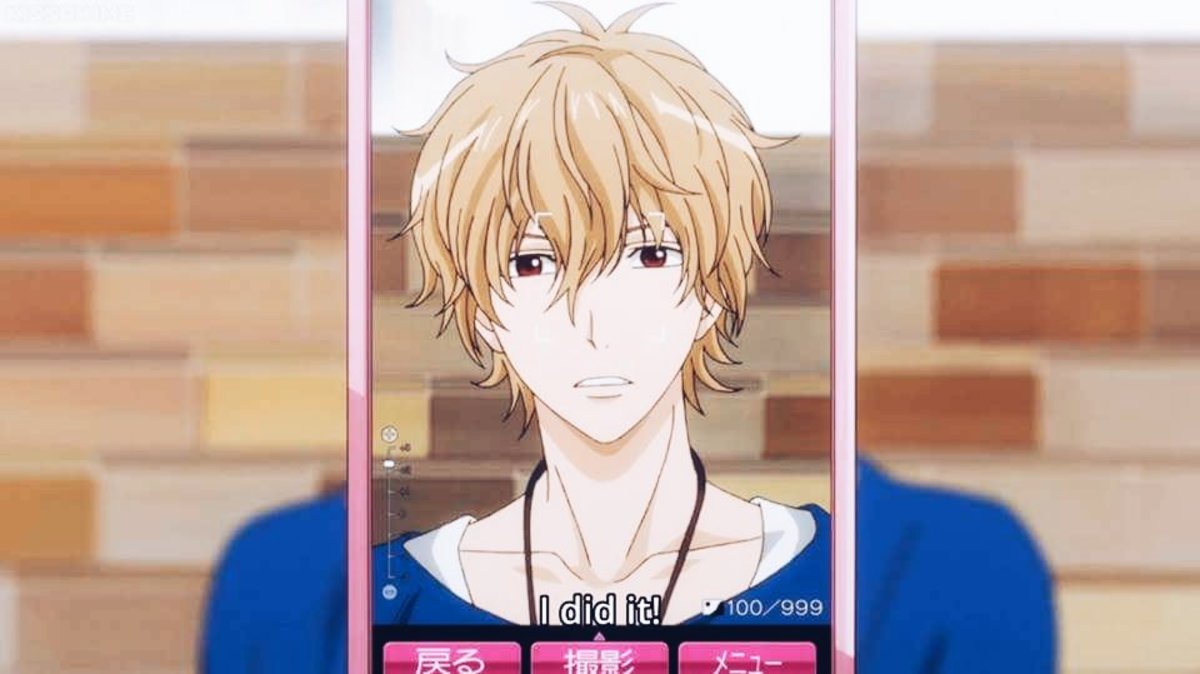Anime Reviews: FLCL

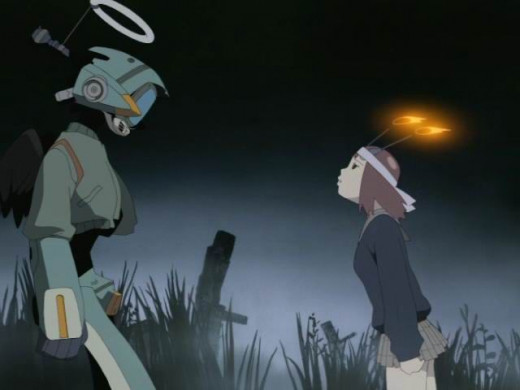
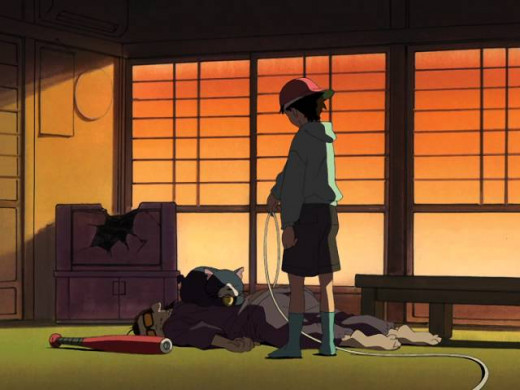
While FLCL contains a disturbingly high amount of unadultered insanity, its many merits will at least ensure that you enjoy every ridiculous moment of it.
Title: FLCL a.k.a. Furi Kuri a.k.a. Fooly Cooly
Genre: Action/Comedy
Production: GAINAX / Production I.G
Series Length: 6 OVA
Air Dates: 4/26/2000 to 3/16/2001
Age Rating: 13+ (mild violence, suggestive themes and implied sexual content, general mindscrewiness)
Summary: Naota Nandaba is an ordinary kid from the ordinary town of Mabase, where absolutely nothing exciting ever happens. In the center of town is an ominous iron-shaped power plant called the Medical Mechanica, which blows out thick, white smoke at the same time every day. But even in this humdrum town, Naota has problems: he has a crush on Mamimi Samejima, his older brother's girlfriend, who may or may not share his sentiment while big bro's away. Also, some crazy woman named Haruko runs Naota over with her scooter and slams him in the face with a gas-powered bass guitar. And then Naota starts having giant robots popping out of his head. And then Haruko moves in with Naota and his family. And then government agents show up. And Haruko is an alien. But hey, that's just the way things go in Mabase.
The Good: Mind-bending animation; perfect voice acting; legendary soundtrack; fun and complex characters; multi-layered symbolism provides plenty of food for thought
The Bad: Not entirely coherent; multi-layered symbolism will drive a normal man mad
The Ugly: We're somehow supposed to believe that Haruko is attractive
This is the last GAINAX review for a while! I swear! But I've had a few people ask me about FLCL and what I thought about it, so I figured that it'd be the best way to close this ongoing string of GAINAX production reviews. I happened to find this series on the internet long ago, but most people remember it from its multiple runs on Adult Swim (alongside Cowboy Bebop, Trigun, and Inuyasha). And chances are, for most of those people, they have never seen anything quite like FLCL, but liked it anyway, and I can completely sympathize. I was flabbergasted when I finished watching for the first time, so what did I do? I watched it again. I enjoyed it back then when it was confusing and new, and I enjoy it now when the mystery is gone but the joy remains.
So, what makes FLCL so much fun, even for those who can't even hope to understand it? Well, the first key things are the art and animation. Apparently money was no object for this production, because it goes all-out with its visuals. When things get serious, there's a lot of detail and shading and artsy tricks going on, but when things get sillier...oh God. Extreme close-ups, wacky movements, complete and total art shifts to the styles of other anime companies or manga panels and even South Park, and of course, ridiculous references. There is always something either poignant or flat-out absurd going on with the visuals, and it also carries over to the audio.
The voice actors in both the English and Japanese versions match their characters perfectly, and much like the animation, they run the gamut from somber and serious to that's-the-most-ridiculous-thing-I've-ever-heard territory. The stand-out performance in both versions come from Mayumi Shintani and Kari Wahlgren, who both portray the same character: Haruko. Though the latter's performance is chiefly an imitation of the former's, it's a very well-acted imitation--proof-positive that imitation is not inherently a bad thing--and both deliver the perfect emotional tones they're supposed to. Ranging from loud, nasally, and obnoxious to soft and gentle, Haruko has to cover a lot of ground, and both actors do so brilliantly (though they both also never got many other roles in anything else...).
I could go into other stand-out performances, like Izumi Kasagi's Mamimi or Barbara Goodson's Naota, but upon revisiting the series, I've learned that they all stand out and are all brilliant. Just, Haruko rises a notch above the rest. If you love voice acting or want to be one, FLCL is a great series to study.
And now for the 2nd most memorable aspect of the series: its music. I have never seen a rock-based soundtrack as good as this one, and I have never seen a more clever example of promoting a lesser-known band in your movie/TV series. Enter The Pillows, a formerly unknown Japanese rock band who had some fans high up in GAINAX. It didn't take long for their popularity to skyrocket due to FLCL, and it's easy to see why. How did stuff this catchy and memorable stay obscure for so long?! Well, the series' soundtrack is almost entirely made up of The Pillows songs, so you get a sneak peek at their discography before you buy it all in a ravenous fit of hunger. It does help that The Pillows have written a variety of songs to match all kinds of moods, and so it translates well to a series soundtrack. We have a mellow rocker with "One Life," the more melancholy and highly enjoyable "Funny Bunny," the incredibly dynamic "Beautiful Morning With You," and finally, my personal favorite, the action-packed anthemic rocker "Blues Drive Monster." What a song! So, uhh...the music is awesome, and I must conclude this section the only way I can: with the ending theme, "Ride on Shooting Star."
But then there's the most memorable part of the series: the characters. In particular, anyone who has seen FLCL will probably never be able to forget Haruko, who contains roughly 90% of the series' total supply of insanity. She is the very definition of chaos and childishness, but she is also capable of giving Naota support and comfort in these turbulent days (which are mostly her fault to begin with). Naota seems like your standard disaffected youth, but doesn't blink an eye when any number of crazy things happen around him. He also acts as the responsible adult society expects him to become, because he sees people acting like stooges all around town, and he wants no part of that. Mamimi is a more tragic figure, as the series implies that she's homeless and her boyfriend, Naota's older brother Tasuku, has silently dumped her. She finds solace in believing Kanti, one of the robots that pops out of Naota's head, is an angel sent to help her, and she is prone to fits of vengeance against those she believes has done her wrong.
As with many series that I love, there are just too many great characters to elaborate on. Many others, like Commander Amarao, Lieutenant Kitsurubami, Naota's dad Kamon, Ninamori, Gaku, Musashi, the homeroom teacher--so many likeable characters, so little time.
As far as the story goes, it's less a "story" so much as it is a "theme" to the series, and in this case, it's all about growing up. Simple, right? Should be easy to follow, right? Yeah, uhh...no. While that overarching coming-of-age theme is made obvious, almost everything contained within is made deliberately ambiguous. For example, there is an extended metaphor about 'swinging the bat.' "Nothing will happen unless you swing the bat," Haruko says, moments before reaching into his brain and pulling out a bass guitar to use as a bat to swat away a falling satellite bomb (it makes sense in context). You can literally walk away with a half-dozen theories as to what "swinging the bat" really means, whether it's a euphemism for taking action, making a name for yourself, pursuing your dreams, facing your fears, or just having lots of sex. Or all of the above. Or maybe none of the above. There are plenty of symbolic moments, events, and characters, and it's such a surreal exercise for your brain that you'll have a lot of fun just trying to figure everything out.
But alas, as smart and crazy as the show is, it's those very same things that work against itself at times. The first problem is that FLCL does not form a very coherent narrative. Some things happen, and aside from their thematic relevance to each other, there's not a lot to make these events make sense of each other. The story definitely takes a backseat to the symbolism, and they could've handled it a little better. You'll most definitely have to watch the series multiple times before even a small amount of the symbolism unveils itself.
In the same vein, the other problem with FLCL is that its multiple layers of symbolism and euphemism and theme is guaranteed to baffle anyone on their first viewing of the series, and in many cases, confuse them to the point of turning them off to the series entirely. For many people, refusing to give solid, concrete interpretations of symbolism within your work is not a sign of genius; rather, it's a sign of contempt for the audience or even poor writing. It may be true, and it may be hogwash, but whatever the case, many people really, really hate it when they're taken for a confusing ride and have none of their questions answered.
Despite the fact that it was confusing as all get-out, I was mystified by FLCL, and was determined to see it again, and for me at least, it's just gotten better every time. You notice more things, you form new opinions and new interpretations, and best of all, you just get to have some goofy fun with a bunch of dysfunctional characters while looking at hyperactive and gorgeous animation as The Pillows play yet another one of their awesome tunes. And there was much rejoicing.
Final Score: 8.5 out of 10. Even though the story is an afterthought to the egregious amounts of symbolism that can drive potential fans away, it's ultimately the brilliant artistic direction, great rock music, and dynamic characters that make FLCL a beloved modern classic.


